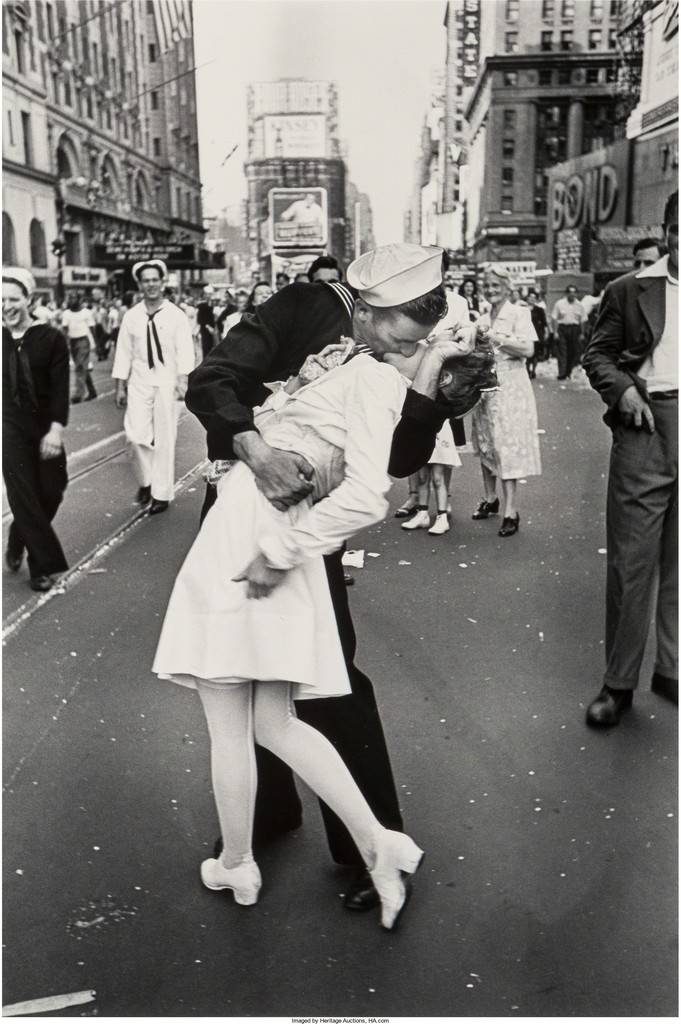
And Shrout’s images of the man behind that photo remind us that, even if a photojournalist is meant to be an impartial witness to history, he is also a part of the history he is witnessing. Shrout’s images of a host of other anonymous embraces help put that famous kiss in context. Explore connections LIFE Photo Collection New York City, United States. In another, he and that women walk toward Shrout, bright smiles on their faces. Browse 172 kiss by alfred eisenstaedt photos and images available, or start a new search to explore more photos and images. In one photo, Eisenstaedt kisses a reporter, his camera slung over his shoulder, in a pose not unlike that of the famous kiss he photographed that day. Crowds gathering in Times Square to celebrate the news of Japans surrender on V-J Day, New York City. Alfred Eisenstaedt Explore connections LIFE Photo Collection New York City, United States A jubilant Amer. While Shrout’s photos have much in common with Eisenstaedt’s-kisses abounded that day-they capture one thing that Eisenstaedt couldn’t easily have captured: images of Eisenstaedt himself. Browse 203 vj day in times square photos and images available, or search for alfred eisenstadt to find more great photos and pictures.

sailor kissing a woman upon learning that Japan surrendered from World War II. One of his most famous covers, V-J Day in Times Square, depicts a U.S.
Alfred eisenstaedt vj day photo series#
He is best remembered for his covers and series that appeared in Time magazine. When World War II finally came to a close on August 14, 1945, Americans all over. Alfred Eisenstaedt was an American photographer and photojournalist. Alfred Eisenstaedt/Time & Life Pictures/Getty Images. Shrout, brought a different set of negatives back to the office that day, with his own perspective on the people’s response to peace. Alfred Eisenstaedt's iconic 'V-J Day in Times Square' photo.

It has also in recent years received a sort of #metoo infamy, after the woman in the photo said that the kiss was nonconsensual.īut “The Kiss” was not the only photograph taken that day, nor was Eisenstaedt the only photographer navigating the boisterous New York City festivities. Often called “The Kiss,” it became the iconic image of celebration at war’s end, a black-and-white bookend separating an era of darkness from the beginning of a time of peace. Taken amid the jubilation of V-J Day, which effectively brought World War II to an end, Alfred Eisenstaedt’s black-and-white image was first published in Life magazine in 1945 and has since.

Photographer Alfred Eisenstaedt used the Leica Illa. Alfred Eisenstaedt’s photograph of a sailor kissing a woman in Times Square, after news broke of the Japanese surrender in World War II, has lived a storied life since it was taken on August 15, 1945. The German-made camera that was used to take one of the most iconic pictures of the 20th century has sold for almost 150,000 at auction.


 0 kommentar(er)
0 kommentar(er)
